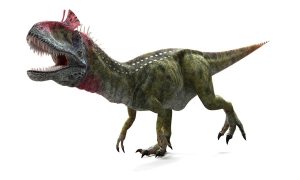
24 interesting facts about Lucy (Australopithecus afarensis)
- 👁️ 1817
Lucy, an Australopithecus afarensis, remains one of the most famous and significant fossil finds in the study of human evolution. Discovered in 1974 in the Afar region of Ethiopia by paleoanthropologist Donald Johanson and his team, Lucy’s nearly 40% complete skeleton bridged a crucial gap in our understanding of human ancestors. At over 3 million years old, Lucy provided unprecedented insights into the appearance, behavior, and mobility of early hominins. Her discovery was a groundbreaking moment in paleoanthropology, challenging previous notions about the timeline and progression of human evolution. Here are 24 interesting and informative facts about Lucy (Australopithecus afarensis) that highlight her importance and legacy.
- Lucy’s scientific name is Australopithecus afarensis, and she lived approximately 3.2 million years ago.
- She was discovered on November 24, 1974, in the Afar Triangle of Ethiopia.
- Lucy’s skeleton is about 40% complete, making her one of the most complete ancient hominin specimens ever found.
- The nickname “Lucy” was inspired by the Beatles song “Lucy in the Sky with Diamonds,” which was played in the camp the night of her discovery.
- Lucy stood about 3.7 feet (1.1 meters) tall and weighed around 64 pounds (29 kilograms), indicating small stature.
- Analysis of her bones suggests Lucy was a young adult, possibly around 20 years old, at the time of her death.
- Lucy’s pelvic and leg bones indicate she was bipedal and could walk upright, a significant finding in understanding human evolution.
- Despite her bipedalism, features of Lucy’s arms and fingers suggest she might also have been adept at climbing trees.
- Lucy’s species, Australopithecus afarensis, likely had both ape-like and human-like characteristics.
- The discovery of Lucy led to a reconsideration of how early hominins lived, moving the focus towards a more complex view of early human behavior and habitat.
- Lucy’s skull was small, similar to that of a chimpanzee, indicating a small brain size.
- CT scans of Lucy’s inner ear bones suggest that her species had an upright posture similar to modern humans.
- The discovery site of Lucy, Hadar, has yielded over 300 fragments of Australopithecus afarensis individuals.
- Lucy’s knee joint shows clear evidence of her ability to walk upright, a characteristic known as bipedalism.
- She had a valgus knee, meaning her thigh bone angled inward like a human’s, which is a key indicator of bipedal locomotion.
- The shape of Lucy’s teeth suggests her diet was mainly plant-based.
- In 2016, a study proposed that Lucy might have died from falling out of a tree, based on an analysis of fractures in her bones.
- Lucy’s discovery was pivotal in confirming Africa as the cradle of humanity.
- Tools or evidence of tool use have not been found with Lucy’s remains, suggesting Australopithecus afarensis may not have used tools extensively.
- Lucy’s find has led to the Afar region of Ethiopia becoming one of the most studied areas for early human evolution.
- Since her discovery, Lucy has toured various museums around the world, allowing the public to engage with early human history.
- The study of Lucy and her species has helped scientists understand the evolutionary shift from ape-like creatures to bipedal humans.
- Australopithecus afarensis, Lucy’s species, lived in both woodland and grassland environments, as evidenced by the variety of fossils found in similar strata.
- The discovery of Lucy has inspired generations of paleoanthropologists to continue researching human origins.
Lucy’s discovery has been a cornerstone in the field of paleoanthropology, providing invaluable insights into the lives of our early ancestors. Her well-preserved skeleton has allowed scientists to piece together a clearer picture of early human evolution, revealing the complexities and nuances of our journey over millions of years. Lucy stands as a symbol of our quest to understand our origins, bridging the gap between our ancient past and present. As research continues, Lucy will undoubtedly remain at the heart of discussions about where we come from and what it means to be human.











